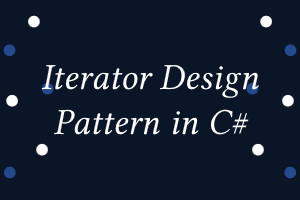Definition of Iterator Design Pattern:
An iterator design pattern is a type of Behavioral Design pattern in C# which allows sequential access to elements of a collection object without exposing its internal representations.
Collections are special classes for data storage and retrieval and are of various types such as List, Array List, Array, Dictionary, Queue, etc. They are the containers that contain objects, and these objects are traversed and accessed using an iterator in Iterator Design Pattern.
UML Diagram and Its Implementation:
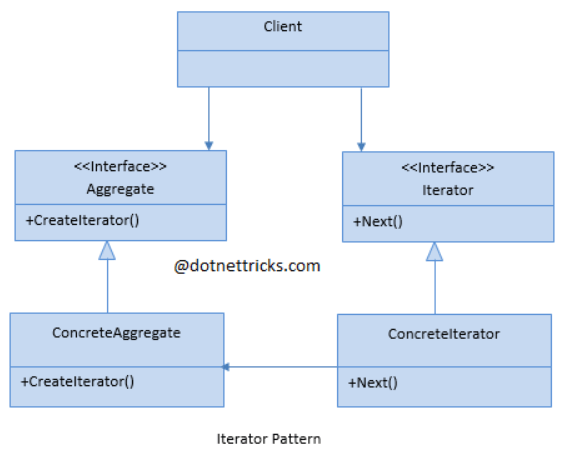
- Client: This is the class that contains the object collection and uses the NEXT operation to retrieve elements.
- Iterator: This is the interface that defines operations for accessing elements.
- ConcreteIterator: It is a class that implements the Iterator interface
- Aggregate: Thi is an interface that defines the operations to create an iterator.
- Concrete Aggregate: This is the class that implements the aggregate interface.
Use of Iterator Design Pattern:
Iterator Design Pattern provides a generic interface for any type of collection. For example: If we have written code for Array for iterating on array elements. In any case, we need to change the type of collection to List as per the user’s requirement, then obviously we need to change the entire code respectively. At this point, Iterator Design Pattern comes to the rescue as it can be used commonly for any type of collection encapsulating the internal logic.
Implementation:
- Main Class:
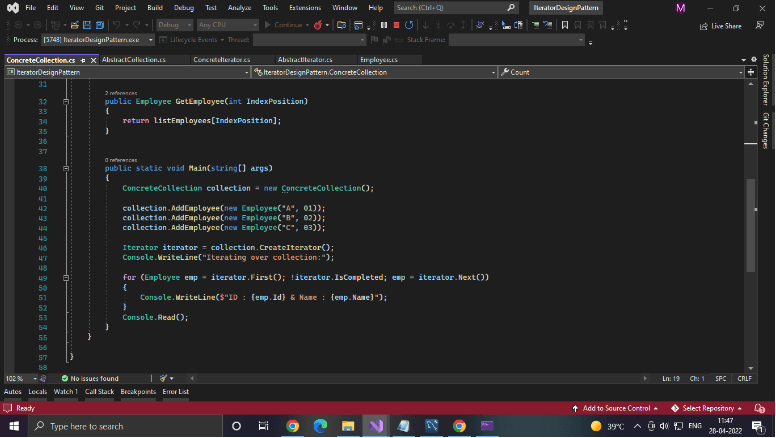
- Iterator:
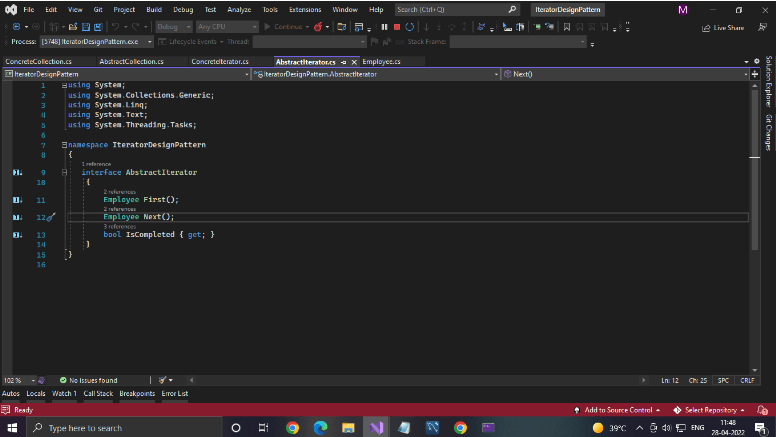
- Concrete Iterator:
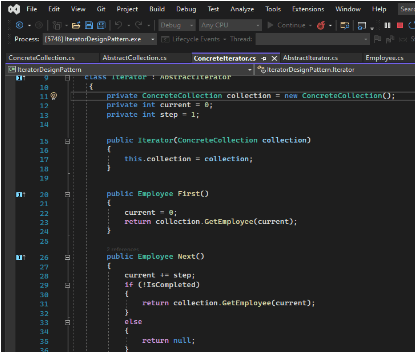
- Aggregate:
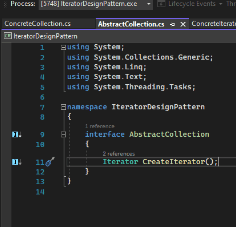
- Output:

If you have skills in PHP programming and you want to enhance your career in this field, a PHP certification from StudySection can help you reach your desired goals. Both beginner level and expert level PHP Certification Exams are offered by StudySection along with other programming certification exams.

